Many retailers can find the wine category daunting given the huge choice of grapes, regions and styles on offer. And to make things tougher, the options are expanding, as brands aim to pull in new consumers from other alcohol categories.
But it’s worth getting a firm understanding of the category. Valued at £4.6bn, the total wine category is double the size of some impulse categories (IRI 52 weeks ending 5 December 2015/Kantar 52 weeks value July 2015). Across the market, it is the sparkling, fruity and sweeter wines which are in growth, bolstered by Prosecco and fruit fusion wines which have successfully attracted new, younger consumers.
In c-stores, New World wines are significantly boosting category value growth. Australia is the number one country of origin in the convenience market, worth £264m, accounting for more than 28% (IRI value sales, 52 weeks ending 7 November 2015). The USA comes in at number two, Chile at number three, followed by Italy and France.
Julian Taylor-Green of Spar Lindford, Hampshire, says this picture is true in his store. “New World wines, such as those from Chile and South Africa, have opened the door and become part of the mainstream market as people have become more adventurous.”
Explaining why he thinks his shoppers have become more daring, he says: “We have a pub out the front of the store which sells a range of different wines from different grape varietals and I think this helps to educate and build the confidence of consumers. They then come into the store looking for wines which might be similar to those they’ve tried in the pub. I think this increased eagerness to try new bottles has been very beneficial to our sales.”
Toni Ingram, head of marketing wine & Champagne at Pernod Ricard, adds that it is not all about Australian wine and it is “an incredibly exciting time for wines from Argentina” as this is the fastest growing category within wine, with volumes up by 29% year on year (Nielsen total off-trade MAT 52 weeks ending 2 January 2016) and up 28% by value.
“Graffigna is leading the way in this category, with volume sales up by 63% and at a £2 premium to the total wine category, at £7.59 per bottle.”
David Smith of Smiths Corner Store in Louth, Lincolnshire, believes shoppers are happier to buy wines from across the globe because they are now less likely to be restricted by preconceptions they may have previously had about countries of origin.
“It used to be the case that people would stick to Cab Sauvignon for red and Chardonnay for white, but now we have a much wider range of grape varietals. If we introduce a new wine on a promotional display, it will encourage people to try it and then they will usually continue to pick it up once it’s off promotion and sited within the category.
“I think this increase in adventurous drinking is happening across the alcohol category. People are much more interested in increasing their knowledge and discovering something new.”
As shoppers become savvier, it’s important for retailers to keep up, according to Budge Dhariwal, managing director at Budge Brands. “Knowing where wines come from and what varietals are in each range can prove invaluable to an unsure customer. A customer who’s been helped to find a bottle of wine that they’ve enjoyed is far more likely to come back and buy another.”
He adds that retailers should use this knowledge to buy in new and interesting bottles. “If their customers can’t find anything exciting or new to tickle their fancy, their new-found desire for alternative wines to taste may drive them to shop elsewhere.”
Realising the importance of knowledge, Paul Cheema brought fine wine merchants in to Malcolm’s store, in Elm Tree Avenue, Coventry, so his staff could learn how to pronounce different grape varieties, what the wines taste like and what foods go well with them. Foods have also been labelled with their recommended wine pairings. Paul says this has not only helped to open up communication between the shoppers and staff, it has helped increase basket spend, too.
The store also holds regular wine tasting events for customers to experience different varieties and hopefully encourage them to buy.
So with this increasing knowledge, how are consumers choosing their wine? According to Nielsen Impulse, the top UK wine brand in the convenience channel is Blossom Hill, closely followed by Hardys and Echo Falls. Other high-value brands include Jacob’s Creek, Concha y Toro, Isla Negra, Gallo Family Vineyards and Lindeman’s (52 weeks ending 13 September 2015). However when it comes to increasing popularity, Yellow Tail is a winner, as it enjoyed a 35% increase in value last year (week ending 13 September 2015).
It is important that retailers not only stock a range of brands, but also a range of grape varietals. According to Bestway’s annual Wine Category Report 2016, one up-and-coming varietal to look out for is Pinot Noir, a light red wine with soft fruits and a silky finish which is growing in popularity. It matches well with chicken and pizza.
Dennis Williams, of Broadway Convenience Store in Edinburgh, says white is the most popular wine in his store at the moment, as well as Prosecco. “A few years ago rosé and Champagne were popular, but now people seem to have moved towards the white and Prosecco,” he says.
Prosecco had the biggest growth of any category in the beers, wines and spirits market and was up 72% in value at the end of last year (IRI weeks ending 7 November 2015). Accounting for nearly 45% of the sparkling wine category, the popularity of Prosecco has driven value growth (up 16%) in the sparkling wine category in the convenience market (Nielsen Total Impulse 52 weeks ending 20 June 2015). Cava is also important to stock as it accounts for 25% of the category.
Premier Estates’ Prosecco has seen sales increase by more than 380% over the past 12 months, according to Dhariwal. “This increase in sales has been consistent for quite a while and shows no signs of abating any time soon. Brand status does not appear to have the same effect on the sparkling market as with still wine; own label is performing incredibly well, showing consumers are increasingly searching for high-quality sparkling wine at everyday prices.”
Dhariwal adds that needing a special occasion to drink wine appears to be a thing of the past. “When being presented with a glass of Prosecco these days you will no longer hear people asking ‘what are we celebrating?’ The celebration these days can just be that we have a nice bottle of Prosecco that needs drinking.”
Julian is enjoying the sales which have followed this trend. “The sparkling Cavas and Proseccos have led to an increase in sales of sparkling wine,” says Julian. “I think this has been helped by lots of promotional activity.”
According to Helen Dakin, marketing manager at IBL Wines, Prosecco has stolen share from Cava and Champagne thanks to consumers’ appetite for ‘everyday luxury’ at an affordable price.
Roopinder Toor, Bestway trading director for licensed, says: “The growth of Prosecco has been phenomenal and it is becoming the nation’s fizz of choice. Much of this is down to the quality of the product and the price differential between Prosecco and Champagne. Prosecco delivers both in terms of taste and affordability.”
Bestway Royal Prosecco has achieved double-digit share since its launch three months ago and a range extension is in the pipeline in the form of Royal Rosato, a light, fresh pink fizz.
Lighter side
Makulu wine – which only makes wine for independents – launched Pomüla (rrp £4.49) this summer – a new spritzer with pomegranate and marula at a 5.5% ABV. This rosé bubbly tipple can be enjoyed on its own or as a cocktail with orange and pomegranate juices.
Paul Hinks, retail sales director, says: “Pomüla combines many of the things that consumers are choosing; rosé in summer, sparkling wine and unusual flavours with sweetness. It’s also very versatile, which gives the consumer more choices when it comes to mixability and occasionality.”
Barefoot has also brought a sweet and light-style bubbly onto market in the form of Pink Moscato, which is showing 43% volume growth (Nielsen Total GB off trade MAT 23 April 2016).
These light and fruity wines bridge the gap between standard Prosecco and fruit-infusion wine – a category which is appealing to fruit cider drinkers and wine drinkers alike.
David Mallory, channel director of UK impulse and on trade at Gallo, says: “Fruit flavoured wines have quickly found a place in the UK wine market. and the Gallo Family Vineyards Spritz range has added £4.5m to this category since its launch in 2015 (Nielsen MAT 21 May 2016).”
Gallo Spritz has been specifically created as a way of bringing new consumers to the category. It appeals to a young, millennial consumer who doesn’t necessarily enjoy traditional wine styles and is seeking a sweeter, fruitier alternative. Gallo is also introducing Spritz peach & nectarine for the summer. The new variant (rrp £4.99) joins the raspberry & lime and pineapple & passionfruit variant.
Black Tower has seen growth within its lower-alcohol wine and sparkling wine categories and has put significant investment into its new fruit-flavoured wines. The new ‘B’ by Black Tower range contains only 5.5% ABV and 55 calories per 125ml glass (30% fewer calories than a standard glass of wine). The range includes B by Black Tower white, rosé and red, B Secco – a lightly sparkling wine – and B Fruitiful – a light wine and fruit juice combination.
Valerie Aston, of Proudfoots Newby store in Scarborough, says fruit wines are “creating a buzz”, adding that this has been boosted by their £3.99 price points.
“Younger Britons have fuelled a boom in fruit-flavoured beers and now the wine industry has got on board by attempting to entice the drinkers to its sector using the same methods,” she comments.
“Targeting a new generation of wine consumers has been one of the biggest challenges facing the wine industry; the growth of cider had made it harder to attract new wine drinkers to the category.
“The new types of wine have a much sweeter and more distinctive taste of many different fruits. This has helped the wine category be relevant to consumers at the start of their wine journey.”
Julian has just started to stock more of these wines as his shoppers have begun to take an interest in them. “These are aimed more at the younger drinkers with a sweet tooth who are moving over from the flavoured ciders. They’ve only really started to garner sales in my shop this year – perhaps that is because of the demographic of my shoppers.”
campo viejo develops new white blend rioja
Treasury Wine brand Campo Viejo has introduced its first Viura-Tempranillo Blanco (rrp £9.35).
The Rioja combines the floral aromas of the Viura grape with fruit and citrus characteristics from Tempranillo Blanco. Viura Tempranillo Blanco is a fitting pairing for chicken, fish and salad dishes.
Campo Viejo has grown by 13.6% in value and 9.9% volume in the past year (Nielsen total off-trade MAT 52 weeks ending 2 January 2016).
Carlotta Colkin, Campo Viejo senior brand manager at Pernod Ricard UK, says: “We are delighted to announce the launch in the UK of Campo Viejo Tempranillo Viura Blanco, following years of experimentation. We know that consumers trust Campo Viejo as we already have the number one Spanish red wine brand in the UK, and will be aiming to replicate that success on the white wine fixture.”
Campo Viejo Tempranillo is growing by 7.1% value and 2.5% volume, while Campo Viejo Reserva sales are up by 34.7% value (Nielsen Total off-trade MAT 52 weeks ending 2 January 2016).
To support the launch, Campo Viejo will be driving awareness among consumers over the summer months with a digital media campaign. The new blend will also be amplified in-store with a suite of POS material. The POS will feature Campo Viejo Blanco and Campo Viejo Tempranillo to inspire shoppers to buy across the range.
Continental Wine & Food recommends stocking Silver Bay Point’s new range for those who want a lower-ABV fruity wine. With an ABV of 8%, the collection includes white with mango and peach, rosé with raspberry & lemon, and rosé with cherry & kiwi.
Dan Harwood, brand activation manager at Eisberg alcohol-free wine, says there are plenty of shoppers who want to cut out alcohol content altogether.
“Sales of alcohol-free wine are booming in the UK, with an increase of 44% in value sales (Nielsen, 52 weeks ending 30 January 2016) and brand leader Eisberg is leading the way with an increase of 79% (Nielsen, 52 weeks ending 30 January 2016).
Speaking of the brand’s Sauvignon Blanc variety, Harwood explains: “Sauvignon Blanc is the ‘go to’ white for wine drinkers; it’s both a grape and name that consumers recognise immediately and feel confident ordering.”
Bill Creighton, category manager for wine at Bestway Wholesale, says the dynamics of the wine category are changing and retailers no longer have to offer big promotions to get sales. “Due to the increase in tax it is no longer profitable for retailers to promote at three for £10 or similar deals. All the growth is coming from £6-plus wines.”
However, PRUK Research 2015 has found that price is very important in a wine shopper’s decision-making process. The occasion will determine the budget, the number of bottles and the price per bottle. The research shows people buying for a special meal, treat or gift will spend £8 or more, people buying a quality brand for socialising with friends will spend £6-£8, and those looking for everyday great value will look to spend less than £6. Therefore, it’s important to stock a range of price points.
Brookfield Drinks managing director Nigel McNally says shoppers will be looking for wine that they can pair with a meal, or that will offer a specific taste experience, and so retailers should develop a basic understanding of wine. He recommends Hanging Houses of Cuenca Tempranillo to go with pizza, pasta and tomato-based dishes.
He also suggests using shelf-edge banners to make food-matching suggestions:
Fish/spicy food – Sauvignon Blanc
Chicken/creamy pasta – Chardonnay
Spicy food/pork – Pinot Grigio
Chilli – White Zinfandel
Spaghetti Bolognese/ chicken – Shiraz
Red meat – Cabernet Sauvignon
Lamb/pasta – Merlot
Steak – Malbec
Sausage and mash – Tempranillo
David of Smiths Corner Store says that most wine bought in his store is about £6.99-£7.50. “We sell a good range from £4 up to £13. There’s a core of about £6.99-£7.50 and then we have our promotions which we aim to hit £5-£5.50 a bottle.”
Dennis helps his shoppers get the value they are looking for by stocking wine according to price, with the price bracket clearly labelled.
“We have signs saying ‘£5 or less’, ‘£6 or less’, ‘£7 or less’, which makes the range really quick and easy to shop. We also have the more expensive wines, but they are not as popular. They are there for when people have a special occasion or celebration at the weekend, rather than for an everyday purchase.”
All of his wines are stored at a ready-to drink temperature, with rosé, white and sparkling in a chiller. “That’s the difference between us and the supermarkets and it’s something we advertise. Why would someone pick up a non-chilled bottle of wine when they can pick up one that’s ready chilled so they can drink it straight away?”
Merchandising
Bestway has the following advice to help you maximise wine sales:
Merchandise by colour, grouping whites, rosés and reds together
Whites and rosés should be in the chiller, with reds served on ambient shelves
Merchandise by price with the lowest (less than £5) at the bottom, mid-priced (£5-£6.50) in the centre and premium (£6.50+) at the top
On each shelf, bottles should be arranged left to right, ascending in price
The top three SKUs in each of the price tiers should be double faced
Place minis in the chilled food section next to evening meal solutions to increase sales or to trigger a purchase from the main wine chiller.
Nigel McNally, managing director of Brookfield Drinks, says clear and simple merchandising is the best way to help consumers shop the store. “We recommend that the fixture is merchandised with a clear and logical layout. It is best to group wine by variety and colour, or alternatively by pricepoint, splitting the range into value, everyday and premium offerings.”
Meanwhile, Valerie suggests retailers make a feature of their alcohol category. For example, her alcohol section has wood-effect flooring and black shelving to distinguish it from the rest of the store and to encourage browsing.
Pricing it right
Personalised wine supplier Hannibal Brown has found that a fiver is the price limit for 35% of consumers buying wine.
It asked 10,000 people across the UK what influences the wine they buy and how much they spend on a bottle. Less than 1% said they spend between £15 and £19.99 on a bottle of wine, while 5% (8% of men) revealed they spend £20 or more on a bottle.
Cost was the biggest influence on which wine shoppers buy (50.4%), followed by occasions (27.2%) and origin (20%).
Trends in the alcohol category as a whole have seen more consumers drinking less, but choosing quality over quantity.
In the convenience channel wines in the £6–£7 bracket are up 3.4%, and wine in the £7–£8 tier has seen growth of 3.8% in convenience (Nielsen, year to 21 June 2015).
Options for the wine category are expanding and consumers are happy to try new wines, so don’t miss out on the NPD which could inspire your shoppers. Keep a wide range of wines in terms of grape, brand and price, as well as a good selection of fruity and sparkling options, and you’ll be sure of a vintage year for sales.
Retailers don’t have to look far for supplier advice on selling wine. Concha Y Toro has created a ‘WineWise’ website, www.wine-wise.co.uk. Today’s Group also offers an annual Wine Category Guide , available to download via www.todays.co.uk.
















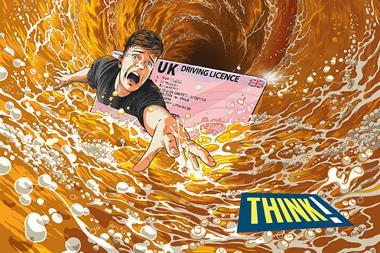
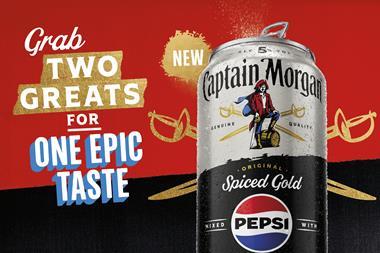
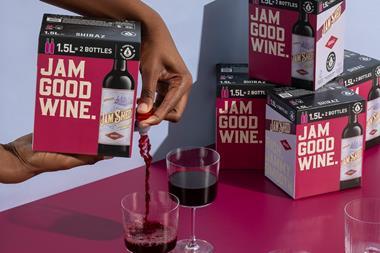
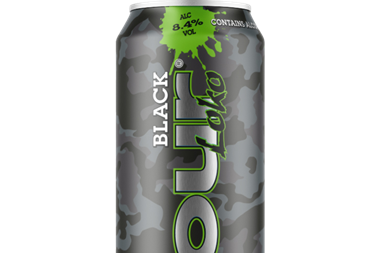
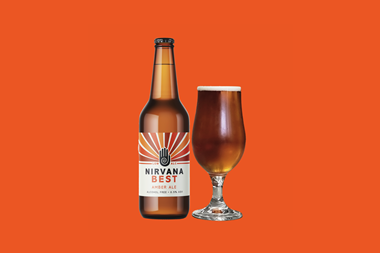
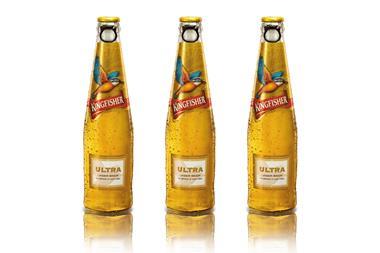






No comments yet